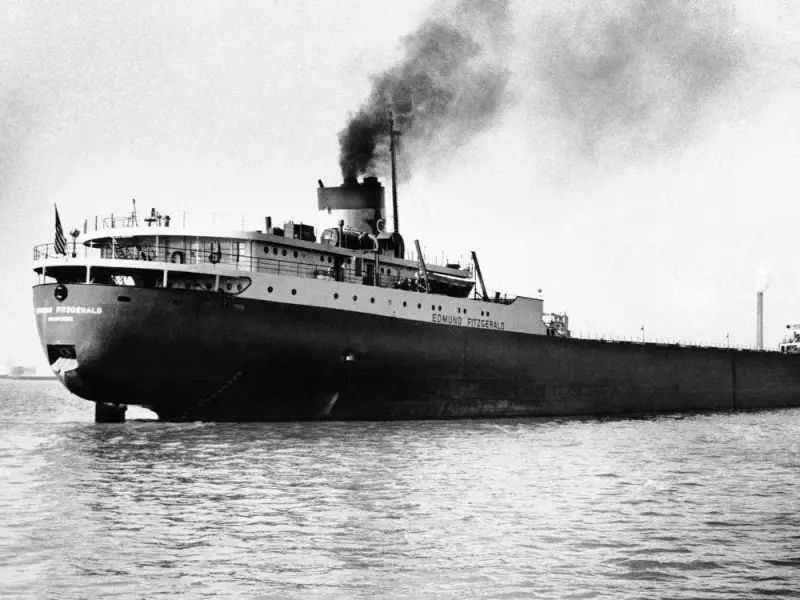
Fifty winters have passed since Lake Superior unleashed its legendary fury, swallowing the massive freighter SS Edmund Fitzgerald and its 29 crew members on November 10, 1975. Yet the haunting story continues to ripple through the Great Lakes consciousness, its mystery as deep as the cold waters that claimed it.
The Perfect Storm That Shattered a Ship
What began as a routine ore run from Superior, Wisconsin, to Detroit transformed into one of North America's most enduring maritime tragedies. The Fitzgerald, among the largest vessels on the Great Lakes, encountered a storm that would rewrite shipping history.
Winds howled at hurricane force, whipping the lake into a chaos of 30-foot waves that battered the 729-foot freighter. Captain Ernest McSorley, a seasoned veteran, radioed nearby ships about taking on water and listing badly. His final transmission: "We are holding our own."
Then—silence. The Fitzgerald vanished from radar screens, taking 29 lives to the lake bottom 530 feet below.
The Aftermath: Questions That Still Echo
The subsequent investigation yielded more questions than answers. How could such an advanced vessel sink so quickly? Theories abound:
- Massive waves breaching the cargo hatches
- Structural failure from repeated groundings
- The mysterious "three sisters" wave phenomenon
- Navigation errors in zero visibility conditions
What remains certain is that the tragedy prompted immediate safety reforms across Great Lakes shipping, including improved weather forecasting, survival suit requirements, and better hatch designs.
Gordon Lightfoot's Immortal Ballad
The wreck might have remained a regional tragedy had Canadian folk legend Gordon Lightfoot not immortalized it in his 1976 ballad "The Wreck of the Edmund Fitzgerald." The haunting lyrics introduced the story to millions, transforming the ship into cultural legend.
"The legend lives on from the Chippewa on down / Of the big lake they called Gitche Gumee" begins the epic song that continues to introduce new generations to the Fitzgerald's story.
Remembering the 29 Lost Souls
Each November, memorial services across the Great Lakes region honor the crew members who never made it home. The Mariners' Church of Detroit rings its bell 29 times, while families and maritime enthusiasts gather at Whitefish Point, where the ship's recovered bell serves as a moving memorial.
As veteran Great Lakes captain John McCarthy reflects, "The Fitzgerald taught us that Superior is the boss. Fifty years later, we haven't forgotten that lesson—or the men who paid for it with their lives."
The wreck site remains protected as a gravesite, its story preserved in museums and the collective memory of a region that understands the price of working these inland seas.





